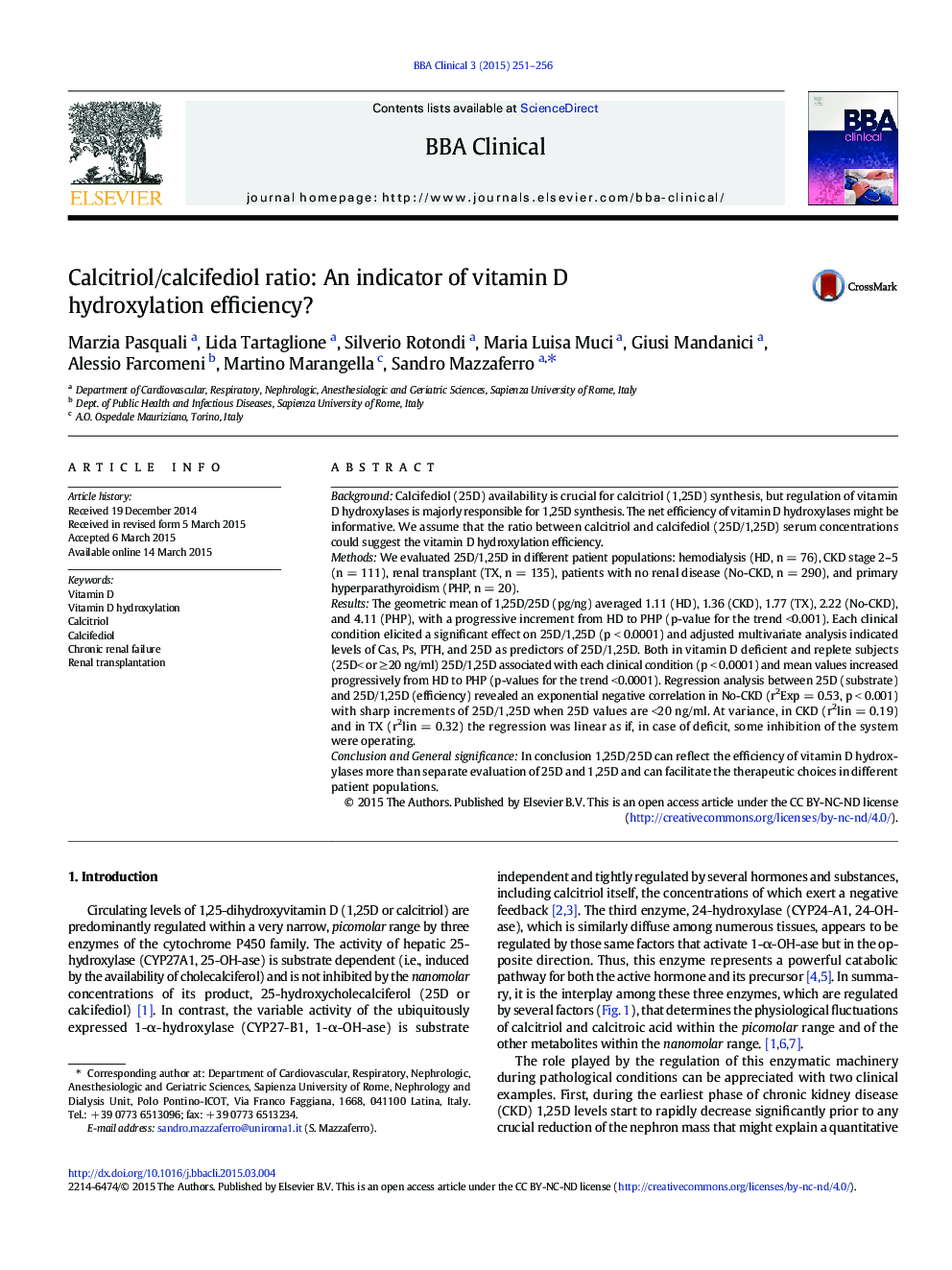| Article ID | Journal | Published Year | Pages | File Type |
|---|---|---|---|---|
| 2773143 | BBA Clinical | 2015 | 6 Pages |
•1,25D/25D ratio could represent an index of vitamin D hydroxylation efficiency.•1,25D/25D ratio progressively increases from HD to CKD, TX, No-CKD and PHP.•Each of these clinical conditions affected the value of the ratio.•In selected populations 1,25D/25D ratio could guide substitutive therapeutic choices.
BackgroundCalcifediol (25D) availability is crucial for calcitriol (1,25D) synthesis, but regulation of vitamin D hydroxylases is majorly responsible for 1,25D synthesis. The net efficiency of vitamin D hydroxylases might be informative. We assume that the ratio between calcitriol and calcifediol (25D/1,25D) serum concentrations could suggest the vitamin D hydroxylation efficiency.MethodsWe evaluated 25D/1,25D in different patient populations: hemodialysis (HD, n = 76), CKD stage 2–5 (n = 111), renal transplant (TX, n = 135), patients with no renal disease (No-CKD, n = 290), and primary hyperparathyroidism (PHP, n = 20).ResultsThe geometric mean of 1,25D/25D (pg/ng) averaged 1.11 (HD), 1.36 (CKD), 1.77 (TX), 2.22 (No-CKD), and 4.11 (PHP), with a progressive increment from HD to PHP (p-value for the trend <0.001). Each clinical condition elicited a significant effect on 25D/1,25D (p < 0.0001) and adjusted multivariate analysis indicated levels of Cas, Ps, PTH, and 25D as predictors of 25D/1,25D. Both in vitamin D deficient and replete subjects (25D< or ≥20 ng/ml) 25D/1,25D associated with each clinical condition (p < 0.0001) and mean values increased progressively from HD to PHP (p-values for the trend <0.0001). Regression analysis between 25D (substrate) and 25D/1,25D (efficiency) revealed an exponential negative correlation in No-CKD (r2Exp = 0.53, p < 0.001) with sharp increments of 25D/1,25D when 25D values are <20 ng/ml. At variance, in CKD (r2lin = 0.19) and in TX (r2lin = 0.32) the regression was linear as if, in case of deficit, some inhibition of the system were operating.Conclusion and General significanceIn conclusion 1,25D/25D can reflect the efficiency of vitamin D hydroxylases more than separate evaluation of 25D and 1,25D and can facilitate the therapeutic choices in different patient populations.
